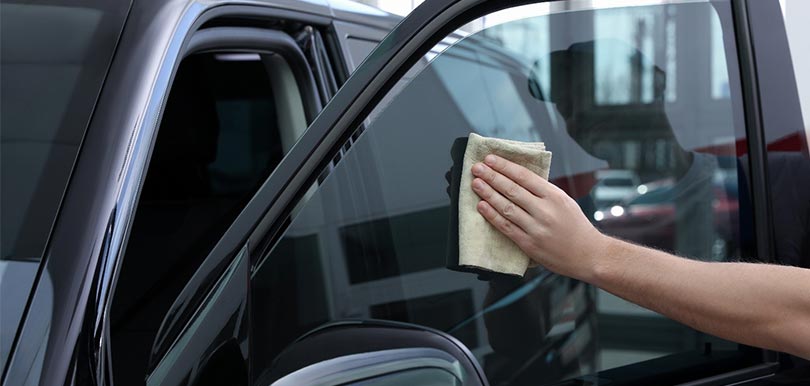Getting your vehicle professionally tinted? Curious about what options you have available? We at Auto Glass & Tint Shop are here to provide you with the resources you need to get the best tint for your car.
Let’s break down the fundamentals of window tinting and the top facts you need to know about window tint laws in both Kansas and Missouri.
Why Should You Consider Window Tint?
Let’s start with the basics: what is window tint? Window tint is film applied to the windows of your vehicle that gives the glass a dark, reflective look. It has numerous benefits to the driver and passengers of the car, as well as amplifying the look and style of the vehicle.
The benefits of window tint include:
- Enhances your car’s appearance and add value
- Reduces glare so you can drive safely
- Prevents interior from fading, cracking, or warping
- Protect yours skin from harmful UV rays
- Saves fuel by minimizing the need for A/C
What Are the Types of Window Tint?
There are two different types of window tint: factory-tinted glass and professional window tint.
Factory-tinted glass is exactly what it sounds like: window tint that was applied when the vehicle was manufactured. It is a standard tint that is applied to most new trucks and SUVs through a process called “deep dipping”, which dyes the glass with dark pigment.
Professional window tint is applied after the car has been manufactured; this tint is done by a professional auto shop, such as Auto Glass & Tint Shop. This type of window tint can be customized, protects against UV rays, and can be applied to the front, side, backside, and rear windows, unlike factory-tinted glass.
Why Are There Window Tint Laws and Regulations?
Window tint laws may seem like a burden, but just like seatbelts, they are in place to keep all drivers safe on the road.
Too much window tint can limit visibility for drivers in states with varying degrees of weather. This will obviously cause a hazard for the driver of the vehicle, as well as put all other cars on the road at risk if the driver has limited visibility.
Window Tint Laws in Kansas
Window tint darkness is measured by Visible Light Transmission percentage (VLT%). This refers to the percent of visible light allowed in through both the film and the glass.
- Windshield: Non-reflective tint is allowed along the top of the windshield above the manufacturer’s AS-1 line
- Front Side Windows: Must allow more than 35% of light in
- Back Side Windows: Must allow more than 35% of light in
- Rear Window: Must allow more than 35% of light in
Window tint may contain metallic elements which help in reflecting incoming light, and reducing the glare and heat generated by visible light.
- Front Side Windows: No metallic or mirrored appearance
- Back Side Windows: No metallic or mirrored appearance
Other Regulations:
- Side Mirrors: Dual side mirrors are required if back window is tinted.
- Restricted Colors: Red, Amber, and Yellow colors are not allowed.
Window Tint Laws in Missouri
The window tint laws in Missouri are close to those in Kansas, however there are some significant differences. The laws are as follows:
- Windshield: Non-reflective tint is allowed along the top of the windshield above the manufacturer’s AS-1 line
- Front Side Windows: Must allow more than 35% of light in
- Back Side Windows: Any % darkness can be used.
- Rear Window: Any % darkness can be used.
- Front Side Windows: Must not be more than 35% reflective.
- Back Side Windows: Must not be more than 35% reflective.
- Side Mirrors: Dual side mirrors are required if back window is tinted.
- Restricted Colors: No colors of tint are explicitly banned.

Get Your Windows Tinted Today at Auto Glass & Tint Shop
Your car looks great, and you want to keep it that way. With over 25 years of window-tinting experience, we are your trusted automotive experts in Kansas City.
Connect with us today to talk to a certified technician about the best window tint for you. Request a free quote today so that you can drive safely and in-style tomorrow.




